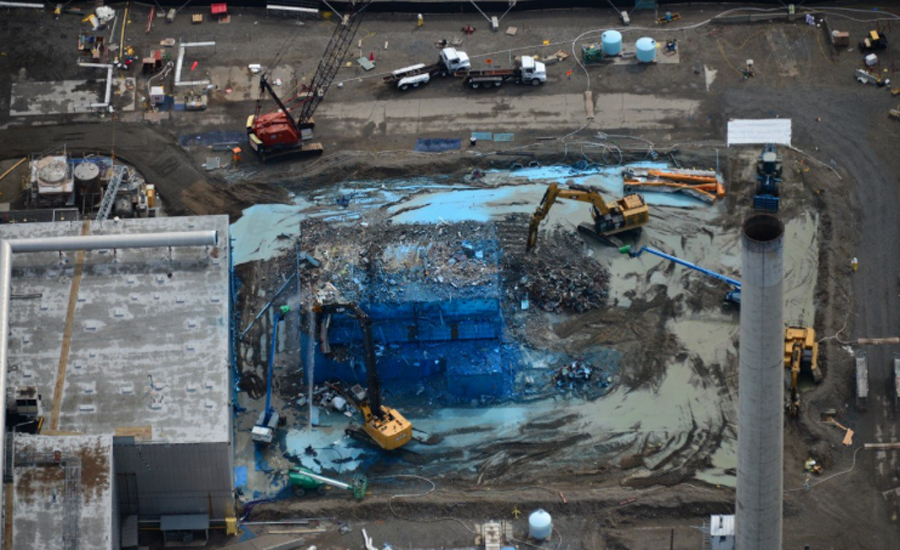As demolition continued on the Hanford Plutonium Finishing Plant on June 8, one of the two dozen air monitoring stations positioned around the site sounded an alarm after detecting low levels of contamination.
For the second time in recent months, a portion of the Hanford Nuclear Waste Site in southeast Washington went into “take cover” mode. About 350 employees of the Plutonium Finishing Plant were released from the precautionary take cover about three hours after the air monitor device set up outside the demolition area sounded the alarm. No injuries were reported and workers returned to normal work duties.
The alarm, dubbed a continuous air monitor alarm, sounded while crews were removing one of the gallery gloveboxes at the plant’s Plutonium Reclamation Facility. Gloveboxes are large pieces of equipment that were used when the plant was producing plutonium during the Cold War. The CAM alarm was stationed in the demolition area, where contamination is expected, according to a statement from the Dept. of Energy Richland Operations office.
Once the alarm sounded, crews stopped demolition and applied fixative to the area, an adhesive spray used to control contamination. The recovery team entered the area and another team conducted surveys and applied additional fixative to mitigate any further contamination spread.
“A few low-level spots of contamination” were found outside the area nearest the demolition zone. With fixative applied to those areas, crews will then remove and dispose of the contamination.
Earlier this spring, a roof collapsed over a contaminated tunnel at the PUREX facility, a former chemical processing facility in the 200 East Area of the Hanford site. An emergency declaration was sent out upon discovery, but no contamination was discovered following the tunnel collapse.
Follow Tim Newcomb on Twitter at @tdnewcomb.

